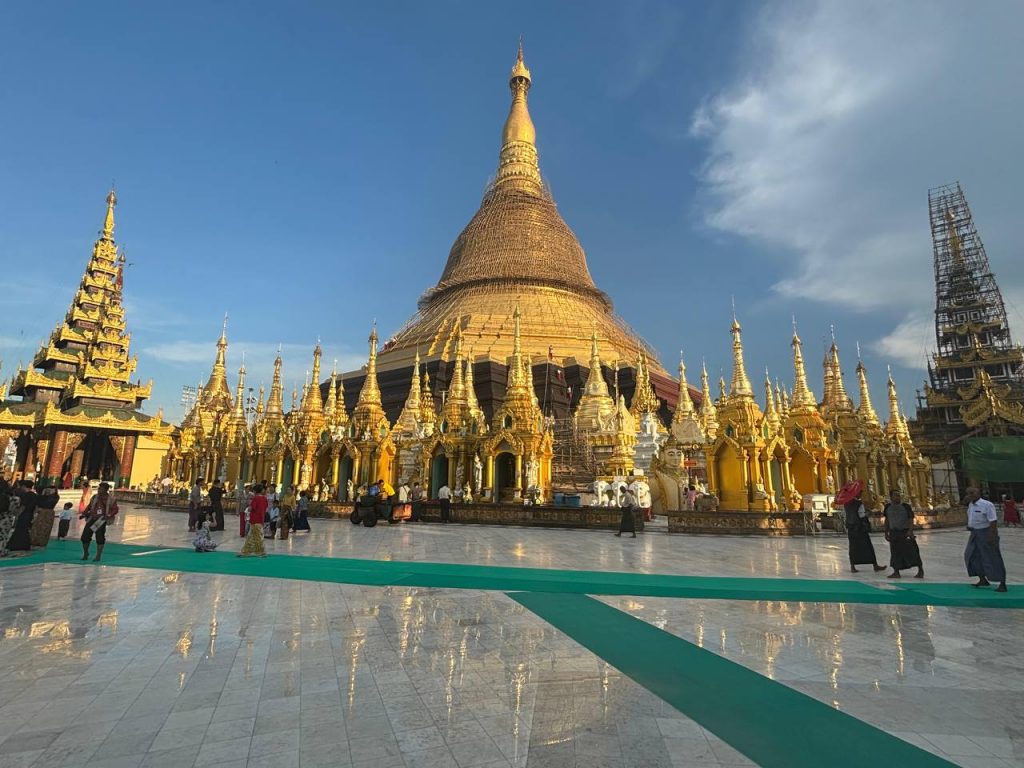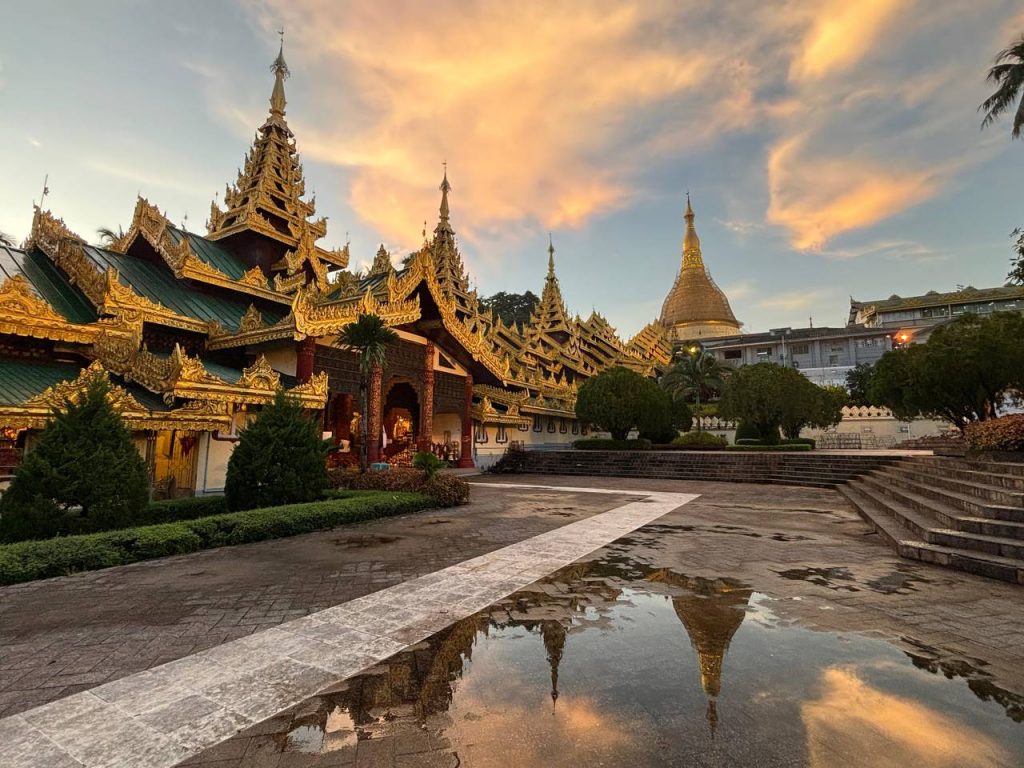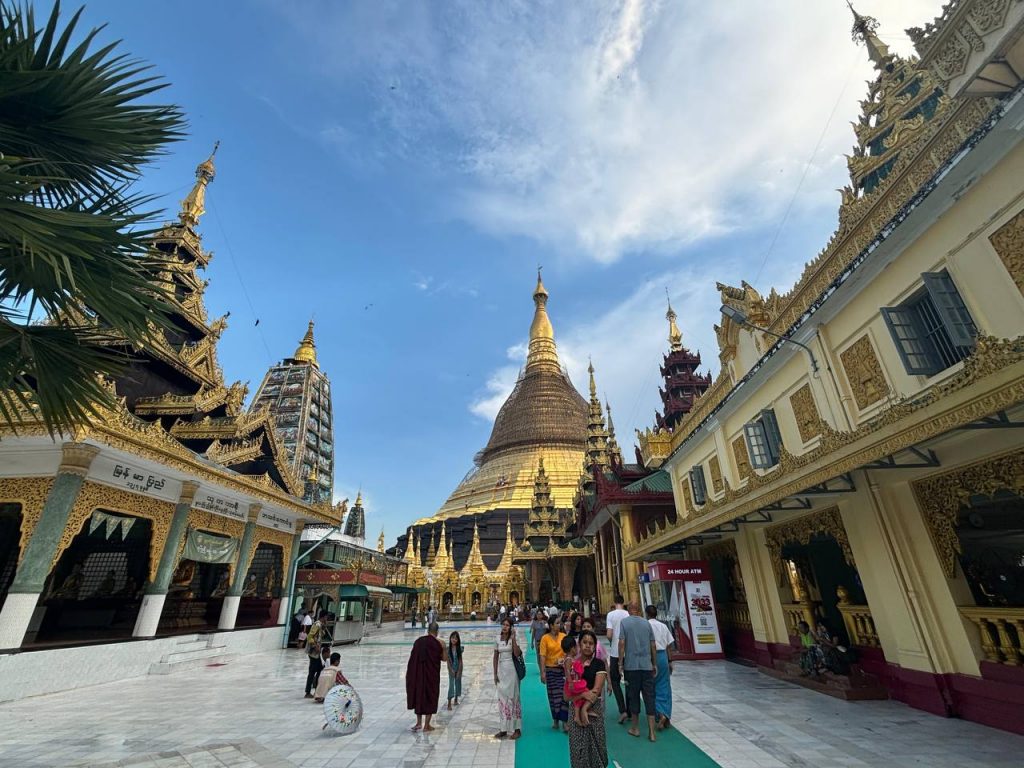Myanmar is a mosaic of languages, with over 100 spoken across the country. These languages reflect the ethnic diversity and complex history of the nation.
Among the most prominent are Burmese, Shan, Karen, Kachin, and Mon. Each language not only represents an ethnic group but also holds significant political weight, as language often intertwines with identity and resistance. Indeed quite often the languages of Myanmar are heavily politicized.
To readout the street food of Yangon click here.

Burmese (Myanmar Language)
Burmese is the official language of Myanmar, spoken by about 70% of the population. A member of the Tibeto-Burman language family, it is closely related to Tibetan and Chinese. Burmese uses its own script, which is derived from the Brahmi script of India, and it plays a central role in national politics and culture.
Burmese became the dominant language during British colonization and continued post-independence, often stirring political tension with ethnic minorities who see its prominence as a tool of cultural assimilation.
How to say hello in Burmese?
- Hello: Mingalaba (မင်္ဂလာပါ)
- Thank you: Chezu tinbadeh (ကျေးဇူးတင်ပါတယ်)
- Yes: Ho deh (ဟုတ်တယ်)
- No: Ma ho bu (မဟုတ်ဘူး)
- How much?: Be lau le? (ဘယ်လောက်လဲ)
For more about the political system in Myanmar click here.
Shan Language
The Shan language is predominantly spoken in Shan State and is part of the Tai-Kadai language family. It shares linguistic roots with Thai and Lao, making it easier for Shan speakers to communicate with their neighbors across the border. The Shan people have long fought for greater autonomy within Myanmar, and the use of the Shan language is a key element of their cultural identity.
Shan is also written in its own script, which is related to the Thai alphabet, but many younger speakers are losing literacy in Shan due to the dominance of Burmese in education.
How to say hello in Shan?
- Hello: Sai ba dee
- Thank you: Khawp jai
- Yes: Jao
- No: Bo jao
- How much?: Bok lai?
Learn more about the Shan language and its cultural importance here.
Karen Language (Sgaw Karen)
Karen is one of the most politically significant languages in Myanmar, spoken by the Karen people, who have been fighting for independence or autonomy for decades. The Karen language belongs to the Tibeto-Burman family but has numerous dialects, making communication between different Karen communities challenging.
The Karen National Union, a political organization that has fought the Burmese government since 1949, promotes the use of Karen as a symbol of resistance. Efforts to preserve the language have intensified in refugee camps in Thailand, where many Karen people have fled due to military conflict.
How to say hello in Karen?
- Hello: Ghaw ler gay
- Thank you: Ta blut
- Yes: Oo
- No: Ma oo
- How much?: Hah ah leh?
For more insights into the Karen language and the political struggles of the Karen people, visit this link.
Kachin Language (Jinghpaw)
Kachin (Jinghpaw) is spoken by the Kachin ethnic group in northern Myanmar, particularly in Kachin State. Like Karen, Kachin is part of the Tibeto-Burman family, and the language is a cornerstone of Kachin identity. The Kachin people have been in conflict with the Myanmar government for years, and the language is both a tool for uniting different Kachin communities and a symbol of their fight for self-determination.
Kachin language and identity are protected and promoted by various armed groups, such as the Kachin Independence Army (KIA), which controls parts of northern Myanmar.


How to say hello in Kachin
- Hello: Kaja ai
- Thank you: Chi yah mah
- Yes: Ya ai
- No: Ma ya ai
- How much?: Shi mang?
Explore more about the Kachin conflict and the role of language in in Kachin here.
Mon Language
The Mon language is one of the oldest languages spoken in Myanmar, belonging to the Austroasiatic family, and is closely related to Khmer, the language of Cambodia. Mon is predominantly spoken in Mon State, and the Mon people are one of the earliest settlers of the region. Despite its rich history, the use of the Mon language has been in decline, partly due to the dominance of Burmese in national institutions.
Efforts to revive the Mon language have been led by Mon political organizations that seek to protect their cultural heritage. Like other minority languages, the preservation of Mon is tied to the broader struggle for political recognition and autonomy.
How to say hello in Mon?
- Hello: Mien tha mai
- Thank you: Kawn tha bao
- Yes: Ban
- No: Ma ban
- How much?: Ta lot pa?
For more on the Mon people and their language, visit this link.
Top 20 languages by speaker in Myanmar
So, while these are the 5 most popular languages by speaker in Myanmar in fact there are over 100 spoken languages within the country. Below are the top 20 languages of Myanmar by speaker.
Here’s the list of the top 20 languages in Myanmar without any extra lines:
- Burmese
- Shan
- Karen (Sgaw and Pwo)
- Kachin (Jinghpaw)
- Mon
- Chin
- Rakhine
- Bamar
- Kayah
- Kayan
- Sakaw Karen
- Wa
- Lahu
- Naga
- Pa-O
- Tai
- Palaung
- Kachin (Lashio)
- Khamti
- Brahmin
Myanmar’s linguistic diversity is as much a reflection of its ethnic complexity as it is of its political dynamism. Each language serves not just as a means of communication but as a marker of identity and resistance.
To truly understand the dynamics of Myanmar join Young Pioneer Tours on one of our Myanmar Tours.





